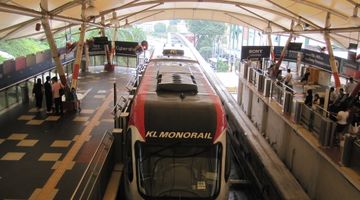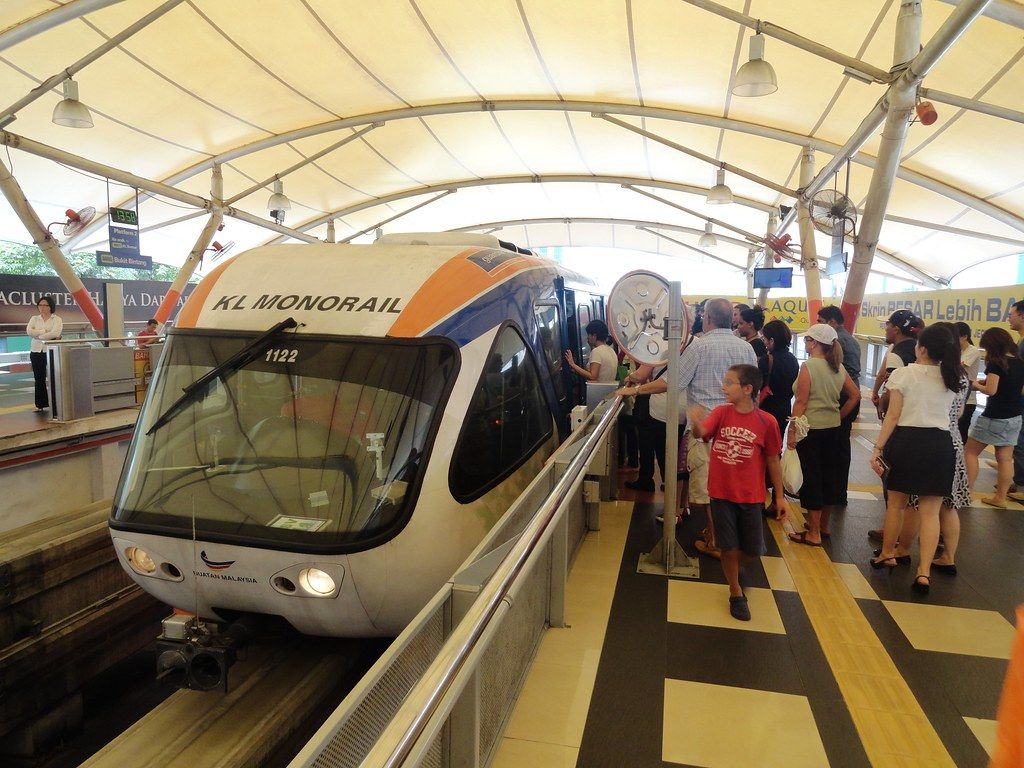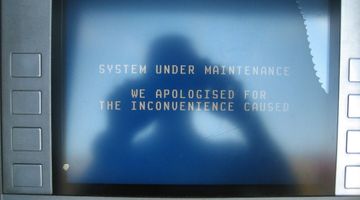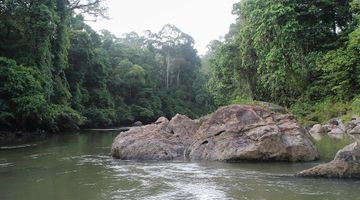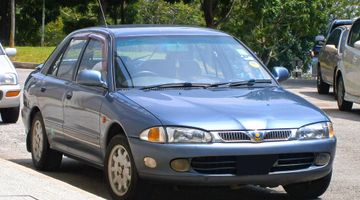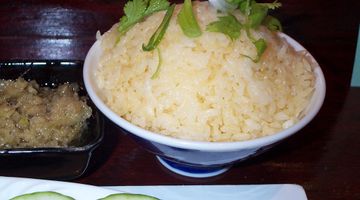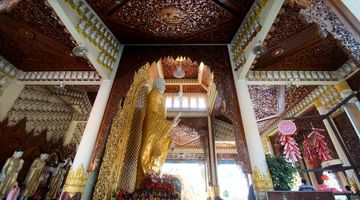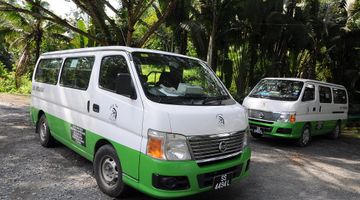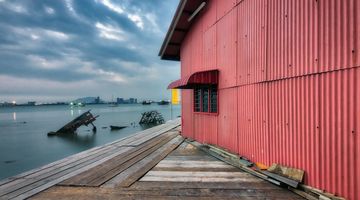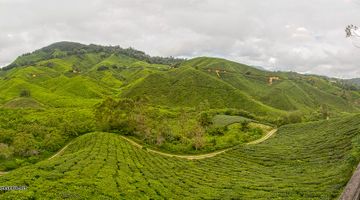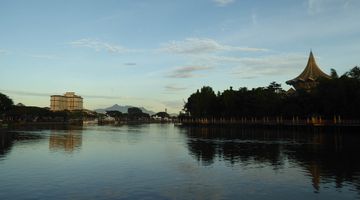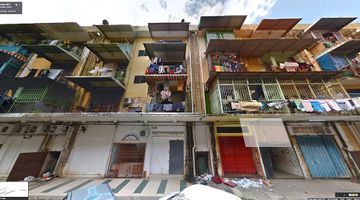Kuala Lumpur Travel Guide
In a nutshell
Encompassing the country’s most archetypal landmarks, both manmade and natural, Kuala Lumpur’s melting pot of cultures and ethnicities, draws in travellers wanting to be at the centre of the vibrant, bustling hub of Malaysia.
Why go to Kuala Lumpur
There are three main ethnicities that make up the city’s population – Malays, Chinese and Indians and the varied customs, languages and culture backgrounds are definitely one of Kuala Lumpur’s tourist attractions. A first-hand witness account of the exotic fusion of a variety of cultures, religions and traditions that make up the 1,6 million population is an excellent reason to pay a visit to the cosmopolitan capital. Known for its iconic skyline of futuristic-looking skyscrapers and towers, as well as its ornate temples from an assortment of religions and philosophical creeds, Kuala Lumpur offers visitors a peek behind the curtain of the peacefully coexisting melting pot.
Travellers interested in architecture are sure to delight in the Petronas Towers, acknowledged as The Twin Jewels of Kuala Lumpur, the Menara KL Tower rising atop the Bukit Nanas Forest Reserve, and the Sultan Abdul Samad Mosque built in 1897. Not only are the religious structures, such as the Batu Caves a definite must see, but as a result of the diverse ethnic makeup, the food on offer in KL is famous worldwide and a definite motivation for stopping over. In conjunction with abundance of delicious food, yet another treat on offer in Kuala Lumpur is undoubtedly the staggering array of shopping opportunities for a range of budgets.
When to go to Kuala Lumpur
Temperatures in Kula Lumpur are fairly regular throughout the year and due to its perennial tropical rainforest climate it is frequently warm with plenty of sunshine. However, due to its tropical weather, the city also has year-round plentiful rainfall and flooding is a common occurrence. November is the wettest month while June is the driest. June and August also tend to suffer from polluted air during June and August as a result of Sumatra’s forest fires.
Where to stay in Kuala Lumpur
Being that KL is an expansive city with a buzzing city hub and its neighbouring urban zones, means that knowing the ins and outs of the various districts is important in deciding what area you’d like to spend the night in.
The city is made up of Old Town (Chinatown), the Golden Triangle, Tuanku Abdul Rahman, Brickfields, Bangsar and Midvalley, Damansara and Hartamas, Ampang and the Northern and Southern Suberbs. All the districts seem to boast at least one attraction and it becomes the choice of the traveller in selecting what area works best with their travel itinerary.
Fortunately the accommodation choices throughout the city are well-suited to a range of budgets from no-frills backpacker hotspots to luxurious 5-star hotels featuring first-class amenities of every kind and stunning views of the frenzied city and famous skyline. Fortunately, even the more expensive and decadent accommodation options are still relatively well-priced compared to the rest of the world and for those on a shoe-string budget, the city is absolutely teeming with low-priced and modest beds for the night.
Where to eat in Kuala Lumpur
Another bountiful commodity in Kuala Lumpur is the food. From the plethora of colourful street stalls whipping up delicious local snacks and dishes, traditional kopitiam (coffee shops) as well as world-class fine-dining at one of the numerous excellent restaurants, everyone’s culinary needs are well catered to here in KL.
A clear reflection on its diverse population, the food in this city is a flavourful mix of Malay, Indian and Chinese with Thai, Sumatran, Japanese, Indonesian and Arabian thrown in for good measure. Dishes are generously seasoned with an assortment of herbs and spices, such as ginger, chili, lemon grass, lime, and galangal and many meals contain wonderfully, heavy-handed lashings of creamy coconut milk. Noodles, rice dishes, vegetables, seafood, meat and the famous sambal all make frequent and favourite appearances on the majority of restaurant menus and hawker signs. Be sure to try one of the ever-present curries and fragrant rice on offer that come wrapped in a banana leaf; followed by the popular dessert, ice kachang, which is shaved ice topped with an assortment of delicious toppings and condensed milk.
How to get around Kuala Lumpur
Getting around in the city is best done by combining various modes of transportation in order to attempt avoiding the all-too frequent gridlocked traffic jams. However, with Kuala Lumpur’s far-reaching bus networks, taxis and light rail commuter trains, moving about and exploring the city is rather easy for travellers to manage. The old centre of town, beginning at China Town is also an excellent spot for sightseeing and is best done on foot in order to discover the buildings, local life and history up close.
For travellers who plan using a lot of public transport during their stay, or for those who are staying for a while, the prepaid MyRapid card is highly recommended. The card allows users to move about the city using rapid KL buses, the monorail as well as the Ampang and Kelana Jaya LRT lines. The card can be purchased at monorail and LRT stations and costs MYR 20, which includes MYR 5 in credit that can be used to travel.
How to get to and from Kuala Lumpur
As a result of Kuala Lumpur being the biggest city in Malaysia, as well as a major air hub in Southeast Asia, getting into Kuala Lumpur is an easy and straightforward affair. Air, rail and road are the entry and departure options for all travellers wishing to travel to and from this vibrant city. Fortunately by and large, Malaysia’s transport systems are efficient and relatively stress-free to navigate.
By air
For those wishing to travel to Kuala Lumpur via plane, it is paramount to understand that there are two different international airport terminals, Kuala Lumpur International Airport (KLIA) Main Terminal and KLIA 2. KLIA 2 is about 2km away from the KLIA main Terminal Building and is used by AirAsia, Tiger Airways and Cebu Pacific, whereas KLIA 1 (Main Terminal) is used by Malaysia Airlines and other international carriers.
By rail
Getting into KL via railway is possible from Thailand, Singapore, and even Kota Bharu in the north of Malaysia on both day and overnight trains. The arrival station in Kuala Lumpur is KL Sentral and all intercity as well as international trains arrive at this station.
For travellers in Thailand who want to arrive in KL, you’ll need to get to Thailand’s only international railway station, which is the railway station in Padang Besar. As of May 2016, the overnight sleeper Intercity Express Train is no longer operational. However, travellers can catch a shuttle train to Pedang Besar in Malaysia and then catch the new ETS (Electric Train Service) high-speed train from Pedang Besar to Kuala Lumpur. The shuttle train costs around MYR 9, and then the ETS train from Padang Besar to KL Sentral will cost you between MYR 76 to MYR 102 for adults and between MYR 42 and MYR 55 for children. The price depends on whether you opt for the Gold Service or the Platinum Service train ticket. Tickets for the shuttle train can be bought at the station on the day of departure and tickets for the ETS Train can be purchased at the Padang Besar station but booking ahead of time is recommended. The ETS Trains run between 6.45am to 7.40 pm at approximately 2-hour intervals.
By bus
Getting into Kuala Lumpur via buses is yet another easy means of transportation for those in Thailand, Singapore or other parts of Malaysia.
Long-distance travel on buses is one of the most affordable and convenient means of travel and if done overnight, won’t cut into any of your holiday time and will also save you money otherwise spent on accommodation.
KL has a few bus stations, with various bus terminals that effectively manage long-distance bus services from numerous competing bus companies. The three main arrival stations in KL will be Hentian Puduraya, Hentian Putra and Terminal Bersepadu Selatan.
For those wanting to arrive from Thailand, you’ll need to leave from Hat Yai in Thailand. For those wanting to get to Kuala Lumpur from Singapore, you’ll need to catch one of the many express bus services departing from various points throughout the city. Popular bus companies that ply this route are Grassland, First Coach and Aeroline and offer trips roughly every hour. The trip will take around 5 hours and a one-way ticket will cost roughly MYR 30 to MYR 50 depending on the selected bus company.
Is Kuala Lumpur a safe place to visit?
Although most people assume that crime is rife in big, capital cities, Kuala Lumpur is relatively safe for travellers. As with all travelling however, it pays to be careful and cautious. Be on the lookout for pickpocketing, petty theft and unmetered taxis. Certain confidence tricks targeted specifically at tourists should also be know; watch out for poker scams as well as Scratch and Win Scams with fake lottery tickets or lucky draws.
